‘One of the finest superhero films ever made, infused with complexities of comic book mythology, it remains a misunderstood epic that was ahead of its time.’ – Samrat M, BFI Member
At first glance Ang Lee’s mature career (together with his long-time producer and screenwriter James Schamus) divides neatly into two halves. First there are bittersweet family dramas with a growing air of tragedy and disappointment: The Wedding Banquet (1993), Sense and Sensibility (1995) and The Ice Storm (1997). Then there are large-scale, action-packed epics which apparently tail off more and more from tragedy: Ride with the Devil (1999), Crouching Tiger, Hidden Dragon (2000) and now Hulk, his version of Marvel Comics’ long-running serial. It would be easy to emphasise the shift in scale from chamber pieces to big-budget blockbusters, and Lee’s extraordinary ability seemingly to master any genre, but what’s more fascinating is the extent to which the same themes and motifs recur in these films irrespective of their tone or genre.
So if Hulk and The Ice Storm seem in some senses poles apart – one a youth-oriented comic-book adaptation, the other a drama drawn from a serious novel – it’s worth remembering that in the latter the teenage narrator Paul (Tobey Maguire) is an avid Fantastic Four fan. He uses the comic’s sci-fi metaphysics (‘anti-matter’, portals to other dimensions) to try to fathom the tangled intricacies of family life. And it’s this experience – the adolescent or young adult’s often mute search for meaning in the face of a chaotic or malevolent environment – that runs through all Lee’s films, lending them the coherence of an oeuvre.
This quiet and troubled perplexity is everywhere in Hulk, notably in two extraordinary shots in which characters witness a nuclear explosion and another in which the Hulk, hanging on to a plane in the outer reaches of the atmosphere, gazes into space. What’s at stake could be termed the epistemology of innocence, but it’s explored without naivety: Lee’s films are centrally about innocence, but rather like David Lynch’s and much more so than Tim Burton’s, they know how fragile a state this is.
The figure of the Hulk, as created in 1962 by Stan Lee and Jack Kirby in strip form and then adapted for US television in 1978 as The Incredible Hulk (with Bill Bixby as the tormented Dr Jekyll figure of Bruce Banner, and the body-builder Lou Ferrigno as his monstrous green-skinned other self), is one of the jokers in the Marvel pack. He (or it) isn’t a superhero as such but a rampaging incarnation of the id – the embodiment of Bruce’s inner beast. Not so in Lee’s film. The Hulk’s face here fills with curiosity or yearning as often as it contorts with rage. Lee underscores the childlike quality with unmistakable references both to 1933’s King Kong (when the Hulk cradles Betty, Bruce’s co-worker and ex-girlfriend played by Jennifer Connelly) and to James Whale’s 1931 Frankenstein (when he’s entranced by a desert landscape). This computer-generated creature is impulsive and vulnerable in a quasi-autistic manner; in this respect he’s very like Mikey (Elijah Wood) in The Ice Storm, perilously alone, seeing the world as no one else does. Whereas Bill Bixby’s Bruce was crushed and melancholy, doomed always to have to break any emotional tie, he was recognisably a mature man. But the Bruce of Lee’s film, played with very little speech or expression by Eric Bana, is a grown-up haunted by the past, still in thrall to childhood traumas. He’s chronically introspective, like Elinor (Emma Thompson) in Sense and Sensibility or Jake (Maguire again) in Ride with the Devil.
Hulk brings to the fore the pervasively non-naturalistic, fairytale quality of Lee’s work – a quality more akin to Dickens or the Brothers Grimm (or indeed Marvel) than any but the darkest Disney productions. Even when, as in The Ice Storm, Lee has worked in a naturalistic mode, there’s still that sense of entrapment, particularly domestic entrapment, that underpins so many fairytales. The mise en scène of Hulk makes this palpable: many scenes take place at night or in sealed laboratories and military installations. (When the Hulk escapes captivity and leaps in great bounds across the south-western desert it’s accordingly exhilarating.)
The film also foregrounds the fable-like element of Oedipal conflict. Weak, hostile or absent fathers abound in Lee’s work, counterpointing the damaged, preoccupied young protagonists. So in Hulk there are two fathers, both authoritarian and more or less mad: Bruce’s psychopathic parent David, played with relish by Nick Nolte (looking for all the world like the Unabomber), and Betty’s father General ‘Thunderbolt’ Ross (Sam Elliott), who tells her, ‘You can trust me to do what I think is right, not what you think you want.’ In one scene the two men glare at each other across a huge hangar like two vicious, mangy lions in a stand-off. In Lee’s films nuclear families are combustible and destructive, like those bombs that are numbly witnessed in Hulk. There’s a mythical wickedness at large.
Hulk is also pointedly non-naturalistic in its use of CGI, split-screen, inserted graphics shots and computer-designed dissolves. Despite the now-conventional use of ear-splitting sound effects to disguise the ‘weightlessness’ of CG monsters, this Hulk is never meant to seem anything other than an animated creation, a digital Pinocchio. So tottering are his movements, on occasions it’s impossible not to recall Ray Harryhausen’s stop-motion work. The artifice is taken to an extreme in the film’s culminating battle, when the Hulk takes on a monster able to absorb elemental power who becomes so engorged it’s as if he’ll grow beyond the Earth’s perimeters. This is CGI in the service of surrealism, recalling the expanding animals in Tex Avery’s King-Size Canary (1947). Taken together, the various visual devices make up a rattle-bag aesthetic that adds to the overall impression of stylisation.
The paradox of the stylised, fairytale nature of Lee and Schamus’ work here and elsewhere is that it’s not by any means juvenile. Hulk is richly mythopoeic and sophisticated. For all their considerable entertainment value, the two X-Men outings and Spider-Man (2002) are essentially high-school capers. Hulk is no less enjoyable, but it’s in another league of complexity and for this reason is the best Marvel adaptation so far. Lee’s career is fast becoming the most interesting in Hollywood.
Rob White, Sight and Sound, August 2003
Hulk
Director: Ang Lee
©: Universal Studios
Presented by: Universal Pictures
Presented in association with: Marvel Enterprises
Production Companies: Valhalla Motion Pictures, Good Machine
Executive Producers: Stan Lee, Kevin Feige
Producers: Gale Anne Hurd, Avi Arad, James Schamus, Larry Franco
Associate Producers: David Womark, Cheryl A. Tkach
Unit Production Manager: David Womark
Production Supervisor: Michael Malone
Production Co-ordinator: Jennifer Campbell
Production Accountant: Kathy Petty
Supervising Location Manager: Laura Sode-Matteson
Post-production Supervisor: Lisa Rodgers
1st Assistant Director: Artist Robinson
2nd Assistant Director: Deanna Stadler
Script Supervisor: Jayne-Ann Tenggren
Casting: Avy Kaufman
Screenplay: John Turman, Michael France, James Schamus
Screenplay: Michael Tolkin *, David Hayter *
Story by: James Schamus
Based on the Marvel Comic Book Character Created by: Stan Lee, Jack Kirby
Director of Photography: Frederick Elmes
Aerial Director of Photography: Hans Bjerno
A Camera Operator: Daniel C. Gold
B Camera/Steadicam Operator: Tommy Lohmann
Video Effects Supervisor: Matthew Morrissey
Stills Photography: Peter Sorel
Visual Effects Supervisor: Dennis Muren
Visual Effects Producer: Tom Peitzman
ILM Visual Effects Producer: Janet Lewin
ILM Visual Effects Co-supervisor: Ed Hirsh
Visual Effects Editor: Gary Levy
Visual Effects Co-ordinator: Christopher Raimo
Special Visual Effects and Animation by: Industrial Light & Magic
Special Effects Supervisor: Michael Lantieri
Graphic Designer: Susan A. Burig
Video Graphics Co-ordinator: Dave Henri
Animation Supervisor: Colin Brady
Editor: Tim Squyres
Production Designer: Rick Heinrichs
Supervising Art Director: John Dexter
Art Director: Greg Papalia
Art Department Co-ordinator: Kirstin Mooney
Set Designers: Roy Barnes, Jim Bayliss, Todd Cherniawsky, Al Hobbs, Luis G. Hoyos, Kristen Pratt, Patte Strong-Lord, Don Woodruff
Set Decorator: Cheryl A. Carasik
Property Master: Jerry Moss
Costume Designer: Marit Allen
Costume Supervisor: Pam Wise
Key Make-up: Dennis Liddiard
Special Animatronic/Puppet Effects: KNB EFX Group Inc
KNB Supervisors: Robert Kurtzman, Greg Nicotero, Howard Berger
Key Hairstylist: Jan Alexander
Opening Sequences & End Title Design: yU+co.
Opticals: Howard Anderson Company
Music: Danny Elfman
Featured Vocalist: Natacha Atlas
Orchestra Conducted by: Pete Anthony
Supervising Music Editor: Ellen Segal
Sound Design: Eugene Gearty, Gary Rydstrom
Production Sound Mixer: Drew Kunin
Re-recording Mixers: Gary Rydstrom, Michael Semanick
Supervising Sound Editors: Richard Hymns, Eugene Gearty
Sound Effects Editors: Kyrsten Mate, David C. Hughes, Paul Hsu
Stunt Co-ordinator: Charlie Croughwell
Cast
Eric Bana (Bruce Banner)
Jennifer Connelly (Betty Ross)
Sam Elliott (General ‘Thunderbolt’ Ross)
Josh Lucas (Glenn Talbot)
Nick Nolte (David Banner, Bruce’s father)
Paul Kersey (young David Banner)
Cara Buono (Edith Banner)
Todd Tesen (young Ross)
Kevin Rankin (Harper)
Celia Weston (Mrs Krenzler)
Mike Erwin (teenage Bruce Banner)
Lou Ferrigno, Stan Lee, Regi Davis, Craig Damon (security guards)
Geoffrey Scott (president)
Regina McKee Redwing (national security adviser)
Daniel Dae Kim (aide)
Daniella Kuhn (Edith’s friend)
Michael Kronenberg, David Kronenberg (Bruce Banner as child)
Rhiannon Leigh Wryn (Betty Ross as child)
Lou Richards (pediatrician)
Jennifer Gotzon (waitress)
Louanne Kelley (delivery doctor)
Toni Kallen (delivery nurse)
Paul Hansen Kim (officer)
John Littlefield (security NCO)
Lorenzo Callender, Todd Lee Coralli, Johnny Kastl, Eric Ware (soldiers)
Jesse Corti, Rob Swanson (colonels)
Mark Atteberry, Eva Burkley, Rondda Holeman, John A. Maraffi, Michael Papajohn, David St. Pierre, Boni Yanagisawa (technicians)
David Sutherland (tank commander)
Sean Mahon, Brett Thacher, Kirk B.R. Woller (Comanche pilots)
Randy Neville (F-22 pilot)
John Prosky (Atheon technician)
Amir Faraj (boy)
Ricardo Aguilar (boy’s father)
Victor Rivers (paramilitary)
Lyndon Karp (Davey)
USA 2003
138 mins
35mm
SIGHT AND SOUND
Never miss an issue with Sight and Sound, the BFI’s internationally renowned film magazine. Subscribe from just £25*
*Price based on a 6-month print subscription (UK only). More info: sightandsoundsubs.bfi.org.uk

BFI SOUTHBANK
Welcome to the home of great film and TV, with three cinemas and a studio, a world-class library, regular exhibitions and a pioneering Mediatheque with 1000s of free titles for you to explore. Browse special-edition merchandise in the BFI Shop.We're also pleased to offer you a unique new space, the BFI Riverfront – with unrivalled riverside views of Waterloo Bridge and beyond, a delicious seasonal menu, plus a stylish balcony bar for cocktails or special events. Come and enjoy a pre-cinema dinner or a drink on the balcony as the sun goes down.
BFI PLAYER
We are always open online on BFI Player where you can watch the best new, cult & classic cinema on demand. Showcasing hand-picked landmark British and independent titles, films are available to watch in three distinct ways: Subscription, Rentals & Free to view.
See something different today on player.bfi.org.uk
Join the BFI mailing list for regular programme updates. Not yet registered? Create a new account at www.bfi.org.uk/signup
Programme notes and credits compiled by Sight and Sound and the BFI Documentation Unit
Notes may be edited or abridged
Questions/comments? Contact the Programme Notes team by email

